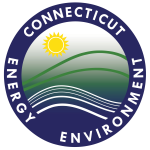Water
Protecting and restoring the state's surface waters, ground waters, and
water related resources


Water has shaped Connecticut’s landscape, eroding the land and leaving behind the varied topography that is Connecticut today. Adequate supplies of clean water are critical to support human societies as well as to maintain healthy ecological communities.
Water is used:
- to sustain fish and shellfish,
- provide recreation for fishermen, boaters, and swimmers,
- to irrigate our farms,
- as a power source to fuel industry,
- to provide cooling for electric power generation,
- to support our individual survival, and
- to provide transportation corridors for the movement of people and commerce.
The quality and quantity of the State’s waters is a reflection of our use and in some case misuse of our water resources. Many are used to dilute and assimilate wastes generated as a result of human activities. Rain washes contaminants out of the atmosphere and off the land surface into our rivers and streams. Damming our rivers to produce electricity or extraction of surface or groundwater water for human use can alter natural streamflow patterns and threaten the sustainability of natural populations of fish and other aquatic life. Poorly planned development, destruction of wetlands, and is some cases a lack of dam maintenance can increase the potential for severe flooding and the destruction of property and loss of life that can be associated with those events.
DEEP is dedicated to improving and protecting our water resources to ensure a clean and adequate supply of water for now and the future.
Quick Links
Connecticut State Water Plan
On the Water Recreation - Boating, Fishing and Swimming;
The Connecticut Institute of Water Resources
Content last updated April 27, 2020


